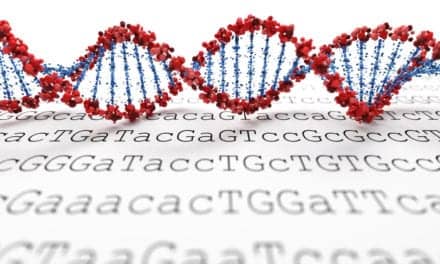Rarecells, New York City, a leader in early cancer diagnosis using circulating tumor cells (CTCs) as advanced indicators of malignancies, has announced publication of the first study demonstrating that the company’s isolation by size of epithelial tumor cells (ISET) test can enable the diagnosis of lung cancer among patients with chronic obstructive pulmonary disease (COPD).1
Early diagnosis of cancer cells through ISET, a simple blood test, holds great promise for improved survivability of lung cancer, a form of cancer where patients are often asymptomatic until the disease is very advanced. Only 15% of lung cancer cases are found in the early stages, before the cancer has spread.2
“This study provides proof-of-concept for the early detection and treatment of cancer in patients who have not yet been diagnosed using traditional methods,” says Paul Hofman, MD, PhD, of the laboratory of clinical and experimental pathology at Pasteur Hospital, Nice, France, and lead author of the study. “This is extremely encouraging because most who die from lung cancer—as well as many of the most deadly tumors, including breast, prostate, ovarian and others—die because traditional diagnostic methods do not detect these tumors until it is too late.
“ISET holds the long-awaited promise of detecting cancer long before it devastates the human body,” Hofman adds. “We are now eager to conduct a larger, multicenter study to further validate ISET as a tool that can help avert the tremendous suffering caused by late-stage tumors and the enormous cost to treat them.”
In the study, researchers used the ISET sentinel cancer cell searching technology to screen for CTCs in COPD patients. ISET has an unparalleled sensitivity, allowing it to detect a single cancer cell in 10 ml of blood. The migration of CTCs into the bloodstream is an event that occurs in the early stages of tumor development and is a critical step in metastases. Secondary metastatic tumors—not primary tumors—are typically the principal cause of death in cancer patients.
The study sought for the presence of CTCs in 245 subjects without cancer, including 168 COPD patients, control smokers, and non-smoking healthy individuals.
COPD patients were monitored annually by ISET and low-dose spiral CT—the state-of-the-art-imaging tool for the detection of lung cancers. CTCs were detected by ISET in 5 of the 168 COPD patients (3%), 1 to 4 years before a lung nodule became detectable by CT scans.
This led to prompt surgical resection of the nodules. This strategy was clinically very successful as all 5 patients were free of any sign of tumor—including CTCs detected by ISET—16 months after surgery.
Rarecells was founded in 2009 by Patrizia Paterlini-Brechot, MD, PhD, professor of cell biology and oncology at University Paris Descartes, to validate and commercialize the company’s patented ISET method. Rarecells Diagnostics is located in Paris, and is a wholly owned subsidiary of Rarecells Holding, located in New York.
According to Rarecells, the ISET test is the most sensitive and the only diagnostic test (i.e., without false positive or false negative results) for identifying CTCs, including “sentinel” CTCs. The platform provides unbiased isolation of intact CTCs and circulating tumor microemboli (CTMs) from all types of cancer. It isolates both epithelial and mesenchymal tumor cells and has an unparalleled sensitivity of 1 tumor cell in 10 ml of blood.
The ISET test is highly sensitive for circulating cancer cells (CCCs), cytopathologically validated CTCs that, when detected, confirm the existence of a primary tumor that has yet to be diagnosed. Follow-up immunomolecular and genetic analyses of CCCs can determine the location of the original tumor and the DNA mutations present in the tumor. All of this information guides the choice of targeted treatment.
Not only does the ISET test hold the potential for early diagnosis of very dangerous “silent tumors”—for example, lung, pancreas, ovarian, breast and cervical cancers—it could potentially be used to monitor patients in remission for recurrence, and to determine the effectiveness of cancer treatments.
“I’m extremely enthusiastic about this technology,” says Raymond Barnhill, MD, professor of pathology at UCLA’s David Geffen School of Medicine, and professor of pathology at the Curie Institute, Paris. “This is a highly innovative blood filtration method to test for not only lung cancers, but all solid tumors at their earliest stages of development, when they are simply not otherwise detectable with current technology.”
Barnhill has been studying the metastasis of cancer for nearly 30 years. “I’m encouraged by these results, and believe that if they can be repeated in a larger, multicenter study, ISET could allow us to treat many of the most deadly cancers early in their pathology, when they are typically much easier to cure,” he says.
According to the American Cancer Society (ACS), lung cancer is the leading cause of cancer death among both American men and women. There were approximately 228,190 new cases of lung cancer diagnosed in the United States in 2013. According to ACS, the 1-year survival rate for lung cancer is 44%. However, when all stages of lung cancer are combined, the 5-year survival rate drops to 16%.3
For further information, visit Rarecells.
References
1. Ilie M, Hofman V, Long-Mira Elodie, et al. “Sentinel” circulating tumor cells allow early diagnosis of lung cancer in patients with chronic obstructive pulmonary disease. PLoS One. 2014;9(10):e111597; doi: 10.1371/journal.pone.0111597.
2. Frequently asked questions about lung cancer. Health Encyclopedia [online]. Rochester, NY: University of Rochester Medical Center; available at: www.urmc.rochester.edu/encyclopedia/content.aspx?ContentTypeID=35&ContentID=FAQLungCancer. Accessed November 3, 2014.
3. Cancer Facts & Figures 2013. Atlanta: American Cancer Society; 2013; available at: www.cancer.org/acs/groups/content/@epidemiologysurveilance/documents/document/acspc-036845.pdf. Accessed November 3, 2014.








